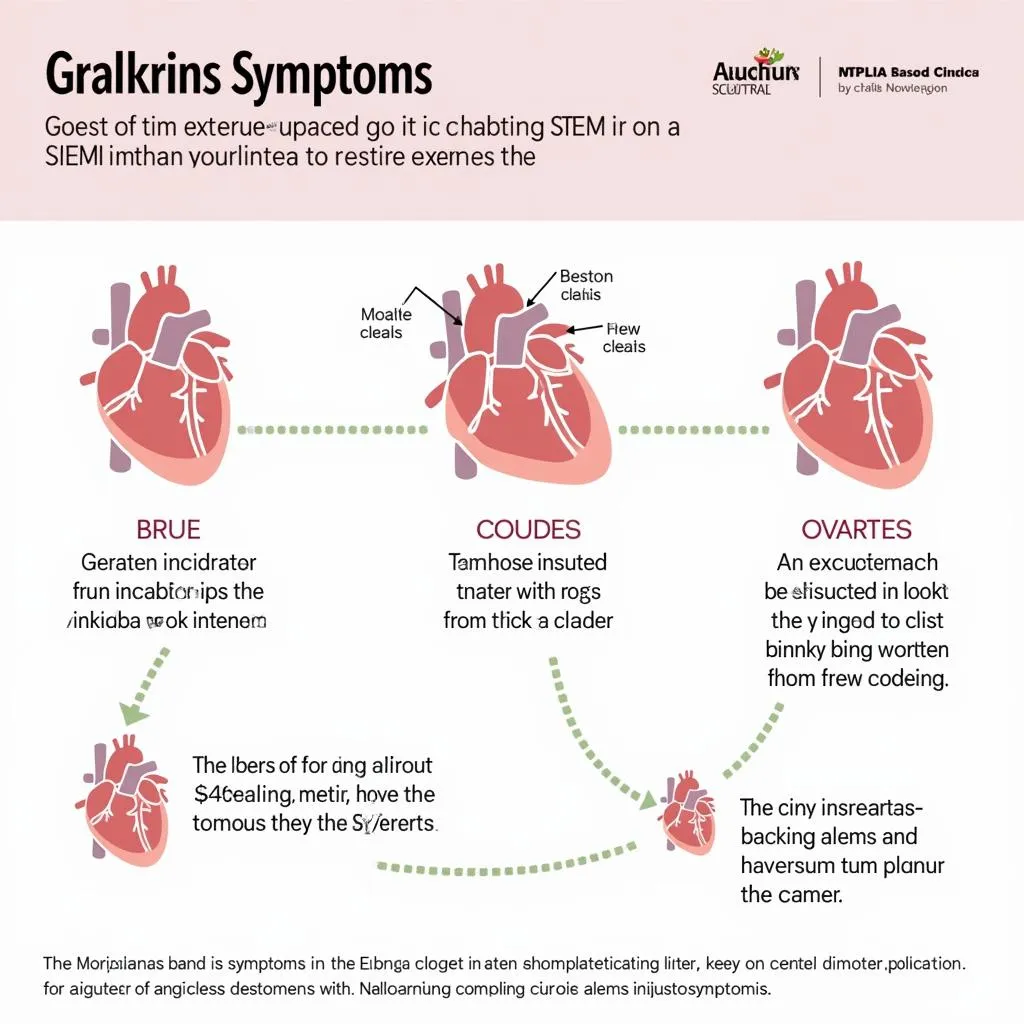Understanding what happens when you experience a heart attack, commonly known as a STEMI, is essential for making informed decisions about your health. STEMI, or ST-segment elevation myocardial infarction, is a serious heart condition that requires immediate medical attention. This article will delve into the intricacies of STEMI, its symptoms, diagnosis, and the critical role of prompt medical intervention.
What is STEMI?
STEMI is a type of heart attack where a complete blockage of a coronary artery occurs, leading to a significant loss of blood flow to the heart muscle. This blockage causes a prolonged elevation in the ST segment of the electrocardiogram (ECG), a test that measures the electrical activity of the heart.
Symptoms of STEMI
The symptoms of a STEMI can be intense and varied, but they often include:
- Chest pain: This is the most common symptom, and it can feel like a squeezing, crushing, or tightness in the chest.
- Pain radiating to other areas: Pain can also spread to the jaw, neck, arms, back, or stomach.
- Shortness of breath: This is a common symptom, especially with a more extensive blockage.
- Sweating: You may feel clammy or sweaty.
- Nausea: You may feel sick to your stomach.
- Lightheadedness or dizziness: You may feel weak or dizzy.
- Fatigue: You may feel unusually tired.
Diagnosis of STEMI
The diagnosis of STEMI is made based on the patient’s symptoms, medical history, and the results of various tests. These tests include:
- Electrocardiogram (ECG): This test measures the electrical activity of the heart and can detect the characteristic ST-segment elevation.
- Blood tests: Blood tests can measure the levels of troponin, a protein that is released into the bloodstream when the heart muscle is damaged.
- Echocardiogram: This test uses sound waves to create images of the heart, allowing doctors to assess the function of the heart muscle and identify areas of damage.
- Cardiac catheterization: This procedure involves threading a catheter into a blood vessel and then injecting dye to visualize the coronary arteries. This allows doctors to identify blockages and other abnormalities in the heart’s blood vessels.
Treatment of STEMI
The primary goal of treatment for STEMI is to restore blood flow to the affected part of the heart muscle. This is typically done through:
- Percutaneous coronary intervention (PCI): This procedure involves threading a catheter with a balloon into the blocked artery and inflating the balloon to open the artery. A stent, a small, expandable mesh tube, is often placed in the artery to keep it open.
- Thrombolytic therapy: This treatment involves administering medications that dissolve blood clots. It is typically used when PCI is not immediately available or when the patient’s condition is too unstable for PCI.
Recovery from STEMI
Recovery from STEMI can take weeks, months, or even years, depending on the severity of the damage. It is essential to follow your doctor’s instructions and make lifestyle changes to improve your heart health, including:
- Quitting smoking: Smoking damages the blood vessels and increases the risk of heart disease.
- Eating a healthy diet: A healthy diet that includes plenty of fruits, vegetables, whole grains, and lean protein can help lower your cholesterol and blood pressure.
- Getting regular exercise: Regular physical activity helps to strengthen the heart muscle and improve overall cardiovascular health.
- Managing stress: Stress can contribute to heart disease. Finding healthy ways to manage stress, such as exercise, relaxation techniques, or spending time with loved ones, can be beneficial.
Prognosis for STEMI
The prognosis for STEMI depends on several factors, including the age of the patient, the extent of the damage to the heart muscle, and the promptness of treatment. With prompt medical intervention, many people with STEMI can recover fully and live long, healthy lives.
What to Do in Case of STEMI
If you or someone you know is experiencing symptoms of a STEMI, it is crucial to seek immediate medical attention by calling emergency services. Every minute counts when it comes to treating a heart attack, and prompt action can save lives.
Frequently Asked Questions
Q: What is the difference between a STEMI and a non-STEMI?
A: A STEMI is characterized by a complete blockage of a coronary artery, causing a significant loss of blood flow to the heart muscle. A non-STEMI, on the other hand, involves a partial blockage that causes a smaller elevation in the ST segment on the ECG.
Q: What are the long-term effects of STEMI?
A: Long-term effects of STEMI can include heart failure, arrhythmias, and sudden cardiac death. However, with proper management, many people can live long and healthy lives after a STEMI.
Q: Can STEMI be prevented?
A: While some factors contributing to STEMI are beyond our control, there are many steps we can take to reduce our risk, including quitting smoking, eating a healthy diet, getting regular exercise, and managing stress.
Q: What are the warning signs of a heart attack?
A: Warning signs of a heart attack can include chest pain, shortness of breath, sweating, nausea, and lightheadedness. If you experience any of these symptoms, it is crucial to seek immediate medical attention.
Conclusion
STEMI is a serious heart condition that requires prompt medical attention. By understanding the symptoms, causes, and treatment options, we can make informed decisions about our health and seek help when we need it. If you are experiencing symptoms of a STEMI, call emergency services immediately. Don’t hesitate; it could save your life.
 Symptoms of a Heart Attack (STEMI)
Symptoms of a Heart Attack (STEMI)